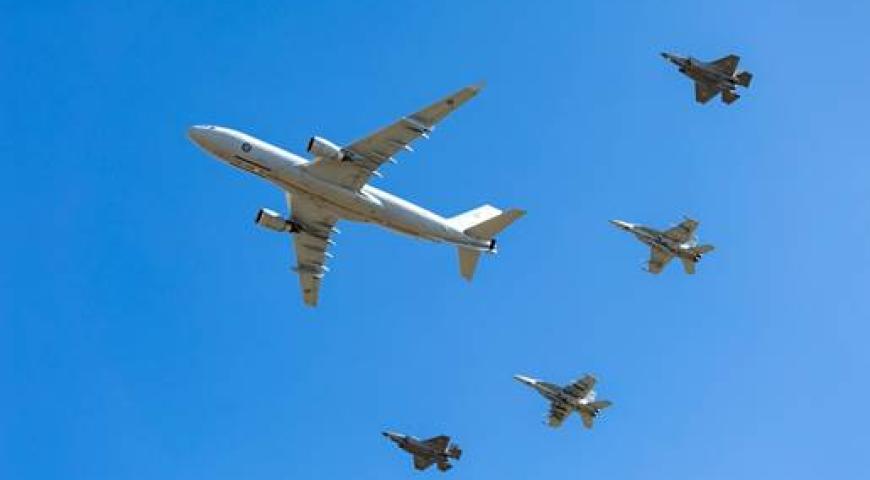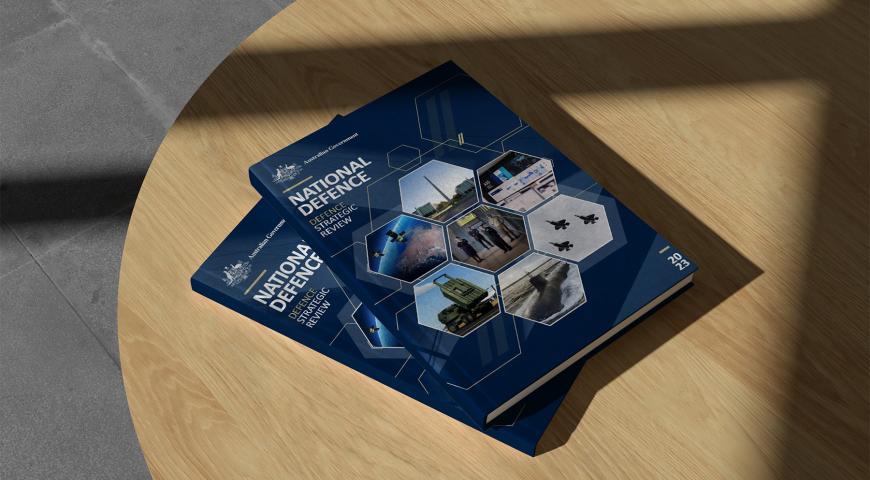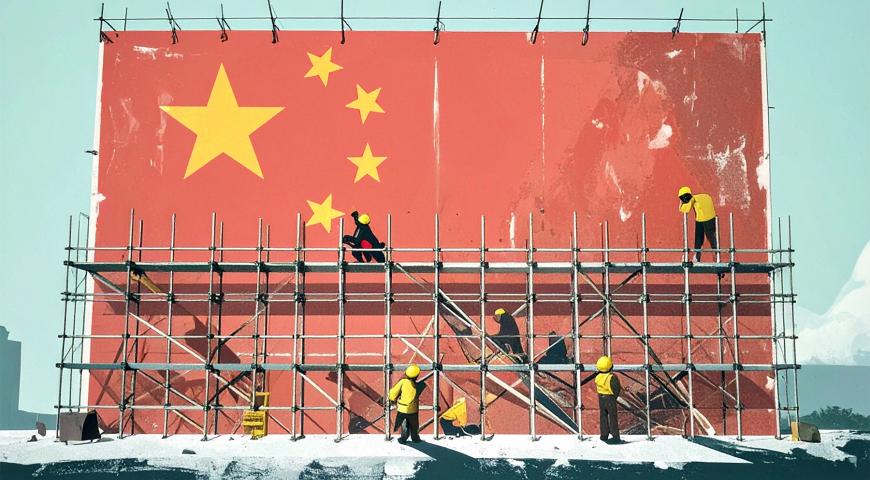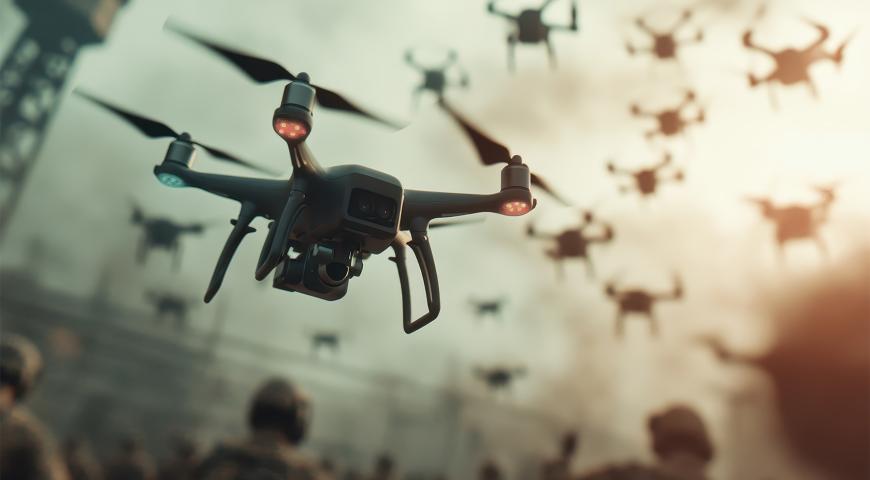The Basics of ‘Women, Peace and Security’ and what it means for the Australian Defence Force
Former Secretary-General of the United Nations and Nobel Peace Prize recipient, Kofi A. Annan said ‘Never walk into an environment and assume you understand it better than the people who reside there.’
Annan’s statement goes beyond the ability to detect if and when men, women, boys and girls are being affected differently by a situation due to their gender. It is a defining part of the Australian Defence Force (ADF) focus on implementing a gender perspective on operations. Australian forces in Afghanistan used gender considerations as a way of gathering valuable intelligence from over half the population (being women), enabling them to search Afghan homes occupied by women and children containing suspected weapons caches, as well as engaging with local women on the community needs in the rebuilding phase – to name a few.
With the release of the ADF’s Program Mandate on Women, Peace and Security, along with this year marking the 20th Anniversary of the United Nations Security Council Resolution 1325 (UNSCR 1325), it has never been more important for ADF members and their chain of commands to understand their part within the agenda.
This article explains the basic foundations of the Women, Peace and Security agenda, and how the ADF integrates Gender, Peace and Security through the implementation of the National Action Plan (NAP), as well as discussing ways ADF members can support this plan.
What is the Women, Peace and Security agenda?
The agenda was established by the UN Security Council in 2000 through the adoption of UNSCR 1325. This was a landmark resolution as it was the first time women were recognised as active agents in peace and security decision-making processes[1], not just victims in need of protection. UNSCR 1325 is the key framework that advocates for the rights of women and girls during conflict and crisis, and outlines the importance of gender perspectives being integrated into conflict prevention, resolution and peacebuilding, as well as in disaster and crisis responses.
The disproportionate effect of conflict and disaster on women and girls is a key driver of this focus. Globally one person in every 113 is now a refugee, internally displaced person or asylum seeker – with up to 80 percent of these being women and children[2]. The UN Security Council has stated that situations of armed conflict, crisis and humanitarian emergencies make women and girls more vulnerable to threats like sexual and gender-based violence, child marriage, and exploitation. This is due to the breakdown of societal infrastructure that impacts access to physical security, shelter, potable water, a reliable food supply, healthcare, education, economic opportunity and justice.
Australia has been an active member of the UN over the last 70 years in the areas of human rights, development assistance, economic and environmental affairs, as well as peace and security. With statistics showing that at least one in five women refugees in humanitarian settings have experienced sexual violence[3], an understanding of the impact of Conflict-Related Sexual Violence (CRSV) on the individual, their family, community, and society as a whole, should be at the forefront of operational planning. In 2008, the UN released UNSCR 1820 (one of ten resolutions on Women, Peace and Security[4]) on sexual violence during wars. This resolution is fundamental to acknowledgement of CRSV as a strategy of warfare and the first time the international community framed sexual violence as both a driver of conflict, either starting conflict or prolonging it. Men and boys are often silenced by the stigma of violence that is assumed to only affect women and girls as the stereotypical victim is feminised, as well as intended to oppress individuals and communities.
There is plenty being done on the home front as well. The Australian Government released the Gender Equality and Women’s Empowerment Strategy in 2016 which made a commitment to invest in gender equality through Australia’s aid program, ‘recognising that women’s empowerment is a key driver of sustainable economic growth, development and stability’[5]. Australia’s Foreign Policy White Paper was released in 2017, outlining that the empowerment of women and girls is a priority of Australia’s foreign policy.
What is the National Action Plan for Women, Peace and Security?
A National Action Plan (NAP) is a tool that UN Member States, like Australia, must use to detail the steps they plan to take to fulfil a resolution's objectives. It is a whole of government policy, which means it is a joint policy working across departments to achieve an integrated governmental response. The Australian NAP on Women, Peace and Security is coordinated by the Office for Women and outlines what the Australian Government wants to achieve in Women, Peace and Security over the next ten years.
The ADF has responsibilities under the NAP to incorporate Women, Peace and Security principles throughout its policy, plans, activities, training, doctrine and operations. In terms of ADF Operations, this is referred to as Gender, Peace and Security and Gender in Military Operations (GiMO), which aims to mainstream a gender perspective so that the needs and priorities of men and women are equally considered. With males acting as the majority of the planners and decision-makers in conflict and peace negotiations, it is imperative to get a diverse range of perspectives so the difference needs of the entire population can be accounted for.
As an example of the importance of a gender perspective, in the Indian Ocean tsunami in 2004, four times as many women died as men in Aceh, Indonesia. Applying a gender perspective on the ADF response planning during Operation SUMATRA ASSIST was vital to providing equitable and relevant assistance. What specific provisions do the surviving women, and orphans of all ages require? Does the surviving women’s economic dependence following the disaster make them more susceptible to exploitable and violence? With a sudden decrease in the population of women, will issues like child marriage or early pregnancy arise?
How does the ADF integrate Women, Peace and Security?
The Department of Defence has a Program Mandate for Australia’s NAP on Women, Peace and Security which defines the ADF’s contribution to meet Australia’s goals on gender equality, human rights, and women and girls’ meaningful participation in peace and security processes. This mandate recognises that women make an indispensable contribution to conflict prevention, conflict resolution, peace and confidence building, as well as an invaluable perspective in every aspect of planning and conduct of military operations.
The term Gender, Peace and Security is used in the ADF to demonstrate its support to inclusive conflict prevention, conflict resolution, peace processes and post-conflict state-building. The Program Mandate outlines six Lines of Effort (LOE) to achieve this:
- LOE 1 - Policy and Doctrine. Defence will continue to mainstream gender in military operations, in strategic guidance documents, doctrine and operational directives and orders. ‘Gender mainstreaming’ refers to the way concerns and experiences of all genders are assessed and enacted equally as fundamental considerations in the planning and conduct of operations, as well as the ADF’s every-day business. This inclusion of a gender perspective will soon become instinctive and the benefits of looking at the realities, needs, perspectives, interests, status, and behaviour of women and girls, as well as men and boys, will be seen at the strategic level through to the tactical level.
- LOE 2 - Training. Defence will enhance its gender peace and security training to military and public service personnel. It will focus on continuing education of the workforce through dedicated awareness and preparation training. It will target personnel at the individual and specialist levels, in pre-deployment phases, at leadership gateways and through the integration of gender perspective into the Professional Military Education continuum.
- LOE 3 - Personnel. Defence is committed to gender mainstreaming within the ADF in order to increase women’s participation across all ranks and employment categories. This will demonstrate our leadership and accountability for the Women, Peace and Security agenda through increased capacity to deploy women on exercises, operations and on humanitarian and disaster response missions.
- LOE 4 - Mission Readiness and Effects. Complex global operations require members of the Australian Defence Force to interact with host nation forces and local populations. It is critical that Australian Defence Force personnel understand how conflict can affect women, men, boys and girls differently and how to apply a ‘Do No Harm’ approach when interacting with local populations. Defence will provide personnel with the training and tools to deal effectively with diverse and often vulnerable populations. Integrating gender perspectives into military operations as well as deploying women at all rank levels is essential to achieving mission success - both in terms of contributing to peace and security and advancing gender equality.
- LOE 5 - International Engagement. Defence is committed to the tenets of UNSCR 1325 and to ensuring that Defence continues to show leadership in all aspects of gender equality – both domestically within the Department and globally. Defence is committed to integrating Gender, Peace and Security principles across the breadth and complexity of Defence international engagement. We stand ready to offer support and capacity building assistance to allies and partners to achieve our mutual goals of meaningful participation of women and girls in conflict prevention and peace processes.
- LOE 6 - Governance and Reporting. Defence will develop a Gender, Peace and Security Strategy and supporting governance and reporting framework. This will ensure that Defence effort is aligned to UNSCR 1325 and subsequent resolutions and Australia’s National Action Plan. These mechanisms will enable Defence to deliver on its commitments to effectively integrate a gender perspective into military operations.
The ADF’s focus on the recruitment of women is linked to these lines of effort. The use of targeted recruiting and gender quotas means that the ADF can train and prepare a larger pool of women to deploy on operations; both promoting the role of women in peace processes and security by them being seen and involved at all levels, as well creating cultural-sensitive roles working to empower local women to be decision-makers free from inequality, discrimination and threats of sexual and gender based violence.
The ADF can only promote women’s participation in the Women, Peace and Security agenda if it sets a gender-balanced example, and its planning and conduct actively supports the work of women’s rights organisations and women’s human rights defenders. Below are some statistics on women’s participation in conflict prevention and resolution:
- The participation of civil society groups, including women’s organisations, makes a peace agreement 64% less likely to fail. International Interactions.
- When women participate in peace processes, the resulting agreement is 35% more likely to last at least 15 years. International Peace Institute.
- Higher levels of gender equality are associated with a lower propensity for conflict, both between and within states. Belfer Center, International Interactions and World Bank.
- Female security sector officials frequently have access to populations and venues that are closed to men, which allows them to gather intelligence about potential security risks. Swedish Defense Research Agency.
- The majority of peace agreements signed from 1990 to today included zero female signatories. UN Women and the Council on Foreign Relations.
- Peace agreements are significantly more likely to have gender equality and women’s rights provisions when women participate in elite peace processes. Monash Gender Peace and Security Centre; International Political Science Review.
- With no women’s participation in the elite peace process – even with some women’s participation in civil society and political institutions – the likelihood of women’s rights being included in a comprehensive peace agreement is substantially reduced – for instance in Afghanistan specifically, it is 40 per cent less likely. Monash Gender, Peace and Security Centre, Army Research Centre Linkage, “Toward Inclusive Peace” with Department of Foreign Affairs and Trade.
The ADF’s responsibilities in implementing, practicing and monitoring Women, Peace and Security in its training and war fighting is led by the Director of Gender, Peace and Security, under Commander Joint Capabilities[6]. A network of trained Gender Advisors ensure that a gender perspective is integrated into the planning and conduct of ADF operations and exercises in order to enhance operational effectiveness. Understanding the battlespace and the humanitarian and human rights situation, and the differing impacts of military operations on men, women, boys and girls aids the commander to make more informed decisions. Gender Advisors are supported by Gender Focal Points who are responsible for implementing gender mainstreaming in their respective workplace.
How can you get involved?
The Women, Peace and Security agenda needs active involvement at all ranks and in all specialisations. A starting point for any ADF member interested in Women, Peace and Security is to educate themselves on the agenda so they have the tools to promote and explain to their subordinates, peers and superiors why a gender perspective is important in their workplace and their trade.
A list of online training tools can be found on the HQJOC Gender Advisor Cell site (search for ‘HQJOC Gender Advisor Cell’ on DPN). Also recommended is The Australian Civil-Military Centre’s (ACMC) introductory online learning program on Women, Peace and Security. The Sustainable Development Goals HelpDesk has also released the ‘I Know Gender 1-2-3 Self-paced Course’ which is highly suitable for new participants to the Women, Peace and Security and gender space.
The Royal Australian Air Force has a network of Gender Focal Points who are responsible for integrating a gender perspective into their individual workplaces. The requirement to become a Gender Focal Point is for the member to have a keen interest in Women, Peace and Security and completion of The Gender Perspective in Military Operations - Air Force eLearning course (Code: 00012311) via Campus or Campus Anywhere and open to all Department of Defence employees.
The Peace Operation Training Centre within the Australian Defence College in Canberra runs the ADF Operational Gender Advisor Course, which trains multi-national Defence members, and other participants from AFP and DFAT, to act as a qualified Gender Advisor. While DEFGRAMs requesting service nominations will be released prior to courses, it should be noted that attendance is prioritised for members assuming operational or domestic Gender Advisor roles.
If ADF members wish to be considered for appointment as a Gender Focal Point, attendance on the ADF Operational Gender Advisor Course, or for a deployment on an ADF exercise or deployment as a GENAD, they should contact their service Gender Advisor to register their expression of interest or submit a nomination through their service chain of command.
Further information can be obtained through the Joint Capabilities Group, Joint Support Services Division:
- http://drnet/JCG/JSSD/Pages/Gender,-Peace-and-Security.aspx
- General enquiries - email - genderpeace.security@defence.gov.au
For a qualification external to Defence, Monash University in Melbourne run a Graduate Certificate of Gender, Peace and Security. This course aims to enhance understanding of the gendered politics of conflict, national security and peacebuilding, and provide training on the facilitation of women's participation as agents of peacebuilding and prevention of conflict, violent extremism and insecurity. Monash have formed the first Gender, Peace and Security Centre which is the only centre in the world dedicated to generating theoretically-informed, evidence-based knowledge on how gender inequalities and dynamics affect threats to peace and security, and how gender perspectives can bring about a change in the drivers of insecurity and conflict. If you’re interested, email arts-monashGPS@monash.edu.
Conclusion
UNSCR 1325 and the attention it bought to the issue of women and conflict is a significant milestone used extensively by UN signatories and non-members, Non-Government Organisations (many dedicated to its implementation), academia, and policy makers in a way that no other UN resolution has been used before. UNSCR 1325 is the only resolution to have its anniversary celebrated with reports, conferences, and special sessions of the Security Council – as is occurring this year for its 20th anniversary.
Without a basic understanding of the importance of supporting women’s meaningful participation in peace processes, prioritising their protection in humanitarian crises, and increasing women’s leadership and decision-making, the Women, Peace and Security agenda can be misjudged as a ‘women’s-only, issue’. The ADF’s ‘lessons learned’ in complex environments shows that the failure to consider a gendered perspective in operations can introduce additional threats or risk to personnel and the mission.
Lyndsay’s recommended reads:
- AFDN 1-18 Gender in Air Operations (Doctrine Note Series).
- Australian Civil-Military Centre, 2015, Women, Peace and Security: Reflections from Australian Male Leaders.
- Barkha, B., Davies, S., True, J., (2019), Towards Women, Peace and Security in 2020 and Beyond, Australian Institute of International Affairs.
- Council on Foreign Affairs Website - Women's Participation in Peace Process.
- DCAF - Geneva Centre for Security Sector Governance - Gender and Security Toolkit (this toolkit is a series of practical and policy guides to promote gender equality and integrate a gender perspective in the security and justice sector)
- Georgetown Institute of Women, Peace and Security Website.
- HQJOC Gender Advisor Cell (DRN site) http://drnet/joc/JOCHQJOCOrgandAdmin/Executive/Pages/HQJOC-Gender-Advisory-Cell.aspx
- Hutchinson, S., Bradney, N., (2019), The imperative of integrating a gendered perspective into military operations, Australian Strategic Policy Institute.
- Resolution 1325 (2000) Adopted by the Security Council at its 4213th meeting, on 31 October 2000.
- Harris Rimmer, S. (2019) The Pacific pivot and Australia’s second national action plan on women, peace and security, The Strategist, Australian Strategic Policy Institute.
- Sharland, L., Feely, G., (2019), Women, peace and security: Defending progress and responding to emerging challenges. Australian Strategic Policy Institute.
- UN Women - Facts and figures: Peace and Security.
- UN Women - In Focus: Women, Peace and Security.
Image credit: ID 171360366 © Angelina Chirkova | Dreamstime.com
[1] "Security Council Resolution 1325". Peace and Women. 18 December 2014.
[4] These resolutions are: 1325 (2000); 1820 (2009); 1888 (2009); 1889 (2010); 1960 (2011); 2106 (2013); 2122 (2013); 2242 (2015), 2467 (2019), and 2493 (2019).
[5] Department of Foreign Affairs and Trade, Gender equality and women’s empowerment strategy, February 2016.
[6] Australian Defence White Paper of 2016 (Section Two – Capability, para 5.79, p.137) and CDF Directive 07/2016 to Director National Action Plan Women, Peace and Security
Please let us know if you have discovered an issue with the content on this page.
Comments
Start the conversation by sharing your thoughts! Please login to comment. If you don't yet have an account registration is quick and easy.




